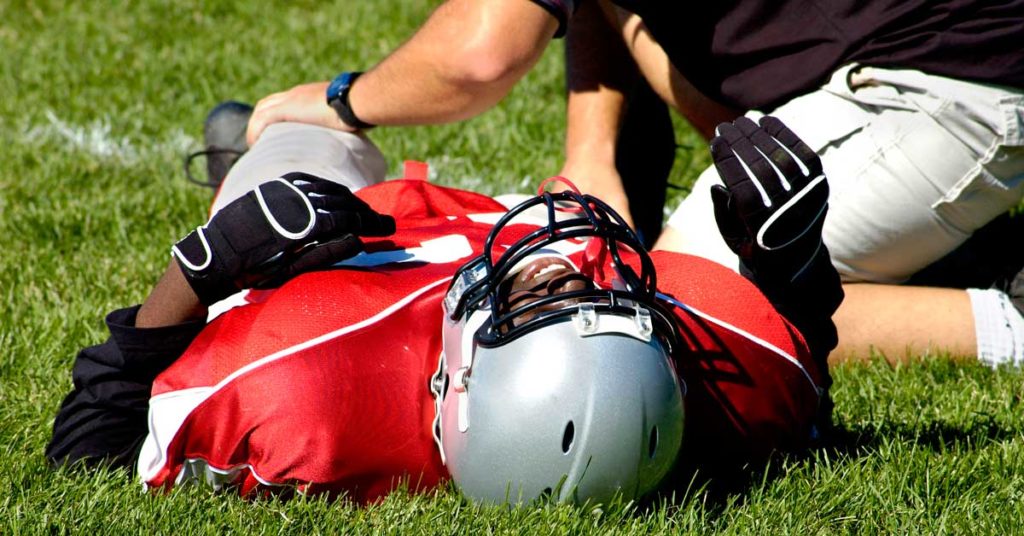
Mitch Gill has been an athletic trainer with Northside Hospital’s Sports Medicine program for Dacula High School in Dacula, Georgia, since 2013. He has experience at the college level as well, with time spent at Emory University, Austin Peay State University, and the University of New Orleans. Mitch is also a strength and conditioning coach in the private sector and has worked with athletes of all levels to prepare them for their respective sports, and he has worked with the baseball team and women’s basketball team in the weight room at Dacula HS.
Freelap USA: In what areas do you believe the athletic trainer can provide value for the athletic and physical development process?
Mitch Gill: One of the biggest areas the athletic trainer could provide value is in the evaluation process, both initially and throughout the entire progression. Whether that is helping with some sort of formal screening process with the strength and conditioning coach or when the screening throws up a red flag on an athlete or a group of athletes, they can help provide a one-on-one approach to help address these issues in the athletic training room or paired with the strength and conditioning program itself. It can be hard for a strength coach to individualize for each athlete, just because of the sheer number of athletes that may come through their weight room, especially at the high school level.
Athletic trainers are also on the front lines of the care for injuries, so they can see firsthand the trends that are occuring within each sport. Working side by side with the strength coach, they can assist the strength and conditioning coaches in developing a program that will hopefully keep the athletes on the field of play.
Freelap USA: In your experience with injuries, what implementations/strategies are needed to help mitigate the common injuries you see in your training room?
Mitch Gill: Monitoring of sleep, nutrition, and recovery would keep a lot of kids out of the athletic training room. These are the three areas that the young athlete neglects most often and that have been linked to increased injury rates.
Today’s athlete is bombarded from all sides with school, social, and home life stressors on top of the stress of preparing and participating in their sport. Often, things like sleep and nutrition are neglected for any number of reasons. A simple daily survey could help sport coaches, strength coaches, and athletic trainers keep an eye on their athletes and make sure they are provided with the education or support that they need but may not be getting elsewhere.
Freelap USA: What tips would you give coaches on how to work harmoniously with an athletic trainer?
Mitch Gill: Communication. It can be an integral part in getting the athletic trainer’s buy-in to your program.
Find ways to make them feel like they are a part of your program, and they will go to bat for you and often be your biggest cheerleader with the athletes you may work with.
Ultimately, you both want what’s good for the athletes, so why not work as a team to help provide that? It could be as simple as establishing some sort of process with the athletic trainer on injury reporting. This will help make sure that the athlete is doing what needs to be done to help the injury heal, as well as allow you as the strength coach to adjust your program for that athlete while they are in the early stages of rehab.
Freelap USA: In your experience, what are youth athletes most commonly lacking in development that can help reduce the chronic injuries and pains they are dealing with today?
Mitch Gill: We currently have a generation of youth athletes who lack a robust toolbox of movement skills. They have begun to specialize so early in sport and didn’t have the childhood of climbing trees or playing tag in the woods that earlier generations were afforded. These athletes have become really good at just one or two things and lack the range of human movement skills that would help them be a more resilient athlete. Some of my healthiest athletes at the high school level were the athletes playing multiple sports growing up and even into high school.
Freelap USA: What is missing in the “return to play” processes for youth athletes who experience traumatic or chronic injury?
Mitch Gill: At my level in a high school, it is the lack of a baseline. This baseline can help set the initial goals of rehab or inform decisions on rehab and programming based on compensations, imbalances, or weaknesses to help address any underlying reasons for why the injury may have occurred in the first place.
This could be a project that the athletic trainer and strength coach could work together on to help build the buy-in I mentioned earlier. Athletic training and strength and conditioning should go hand in hand in the return to play process to help create the best outcomes possible for the athlete.
Since you’re here…
…we have a small favor to ask. More people are reading SimpliFaster than ever, and each week we bring you compelling content from coaches, sport scientists, and physiotherapists who are devoted to building better athletes. Please take a moment to share the articles on social media, engage the authors with questions and comments below, and link to articles when appropriate if you have a blog or participate on forums of related topics. — SF

